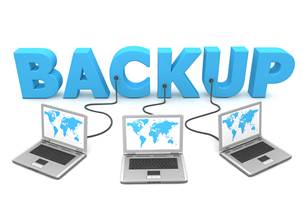
Every company needs to consider what they are doing to protect the data that’s being stored on their servers. It’s one thing to back up data at an individual user level. Backing up data on a much larger scale is something else entirely. Protocols have to be put in place that back up data at a server level without any user intervention. Backups have to be stored in another location in addition to the server. Organizations are making the decision to move their files to the cloud, but there are some distinct disadvantages to that approach. Cloud storage options are just as fragile as their hardware-based counterparts. It’s better to go with both cloud and physical storage to ensure that one of these backup options will remain viable.
Manually backing up data creates the risk that too much time will pass in between backup instances. The backup method that you choose has to back up data at least once per day if not continuously. You should be able to rest easy knowing that your data is backed up without you having to do anything to back it up. The worst thing about data backup is that people often think about it when it’s too late. They operate under the assumption that they will be able to avoid the catastrophic events that inevitably result in data loss. This nonchalant approach leads to them losing all their data in dramatic fashion.
Once data is backed up, work need to be done to ensure that these backups are protected. The last thing you would want to have happen is for your backups to be compromised before you’re able to recover your files. The possibility of backups being squandered underscores the importance of storing them on an external data source. The destination that you choose for your backups needs to be large enough that it can grow as you begin to accumulate more files. This is why so many businesses are going with cloud storage options.
Do not limit the type of data that’s backed up to user files. You should also back up any software that’s essential to the continued operation of your servers. Sometimes a catastrophic event can occur at a server level, which would result in the ultimate undoing of everything within the company unless it all was backed up on multiple occasions. Purchasing additional reserve servers would eliminate the possibility that your company would be left without its nerve center. These extra servers would kick in when the old servers decided to kick the bucket. The information that’s on these additional servers needs to be updated on a regular basis to ensure that you’re dealing with the most up-to-date versions.
Data has become such an importance resource in the current business world. Failing to come up with a way to protect it is one of the worst possible things that can be done. There are many different ways to go about backing up and restoring lost data. It’s essential to do your research before you decide on which option you will use. Not all data backup and recovery methods are created equal. Some of them will fit your particular needs better than others. Knowing that the method you chose will work is valuable, especially if you can determine its success rate sooner rather than later. The amount of information that’s available regarding preserving data is massive and continues to grow with each passing day.
Before you get lost in the voluminous resources about data backup and restoration, you have to generate a vision for how you want to proceed. Choosing too many different methods to attack this situation is ill-advised. You need to have a data backup program that’s tenable and easy to alter when changes need to be made. While backing up your data is important, it should not become such an enormous part of your operations. It should remain running in the background, opening up the possibility for you to work on other things.
Prioritizing data is difficult. This is why you should backup all of your data with no exceptions. It’s better to have to restore files that might not be so essential than to have forgotten to backup files you need. The size of your backups will increase as you begin to gather more files. You should not think about how big your backups have become. You should place more of an emphasis on what you’re backing up instead. Large backups will take longer to restore, which shouldn’t be a problem. Managing the backups you have stored will minimize the amount of time it takes to get your files back. Keeping too many versions of the same backup will create confusion and increase your overall downtime. You have the ability to program your backup program to eliminate your backups after a certain number of iterations.
See related article of Benefits of Backing Up Your Data With a Managed Service Provider


